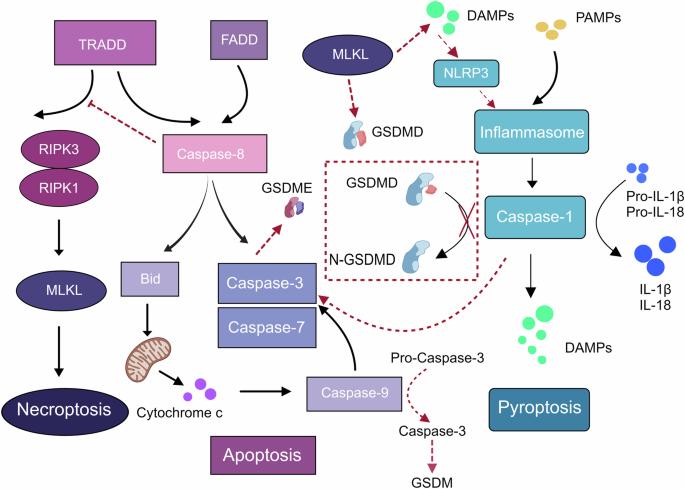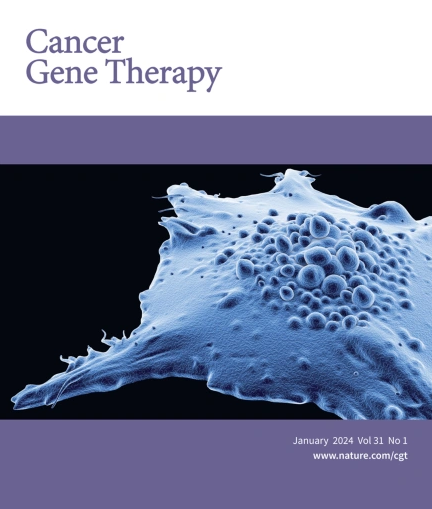PANoptosis in cancer: molecular mechanisms and therapeutic potential
IF 5
3区 医学
Q1 BIOTECHNOLOGY & APPLIED MICROBIOLOGY
引用次数: 0
Abstract
Tumorigenesis is closely related to an imbalance in cell death regulation. PANoptosis is a recently characterized form of programmed cell death that integrates the molecular features of cellular pyroptosis, apoptosis and necrotic apoptosis through the assembly of a multiprotein complex termed the PANoptosome. Beyond its role in cancer initiation and progression, PANoptosis is intricately linked to immune responses within the tumor microenvironment, thus offering new avenues for therapeutic intervention. The present review outlines the interplay among different cell death pathways, highlights the defining characteristics and assembly mechanisms of PANoptosis, as well as discusses its functional roles in cancer biology. Additionally, the implications of PANoptosis in tumor immunity and the potential of targeting this pathway in cancer therapy are explored.

PANoptosis在癌症中的分子机制和治疗潜力。
肿瘤的发生与细胞死亡调控的不平衡密切相关。PANoptosis是最近发现的一种程序性细胞死亡形式,通过称为PANoptosome的多蛋白复合物的组装,将细胞焦亡、凋亡和坏死性凋亡的分子特征整合在一起。PANoptosis除了在癌症的发生和发展中发挥作用外,还与肿瘤微环境中的免疫反应有着复杂的联系,从而为治疗干预提供了新的途径。本文综述了不同细胞死亡途径之间的相互作用,重点介绍了PANoptosis的定义特征和组装机制,并讨论了其在癌症生物学中的功能作用。此外,本文还探讨了PANoptosis在肿瘤免疫中的意义以及靶向这一途径在癌症治疗中的潜力。
本文章由计算机程序翻译,如有差异,请以英文原文为准。
求助全文
约1分钟内获得全文
求助全文
来源期刊

Cancer gene therapy
医学-生物工程与应用微生物
CiteScore
10.20
自引率
0.00%
发文量
150
审稿时长
4-8 weeks
期刊介绍:
Cancer Gene Therapy is the essential gene and cellular therapy resource for cancer researchers and clinicians, keeping readers up to date with the latest developments in gene and cellular therapies for cancer. The journal publishes original laboratory and clinical research papers, case reports and review articles. Publication topics include RNAi approaches, drug resistance, hematopoietic progenitor cell gene transfer, cancer stem cells, cellular therapies, homologous recombination, ribozyme technology, antisense technology, tumor immunotherapy and tumor suppressors, translational research, cancer therapy, gene delivery systems (viral and non-viral), anti-gene therapy (antisense, siRNA & ribozymes), apoptosis; mechanisms and therapies, vaccine development, immunology and immunotherapy, DNA synthesis and repair.
Cancer Gene Therapy publishes the results of laboratory investigations, preclinical studies, and clinical trials in the field of gene transfer/gene therapy and cellular therapies as applied to cancer research. Types of articles published include original research articles; case reports; brief communications; review articles in the main fields of drug resistance/sensitivity, gene therapy, cellular therapy, tumor suppressor and anti-oncogene therapy, cytokine/tumor immunotherapy, etc.; industry perspectives; and letters to the editor.
 求助内容:
求助内容: 应助结果提醒方式:
应助结果提醒方式:


